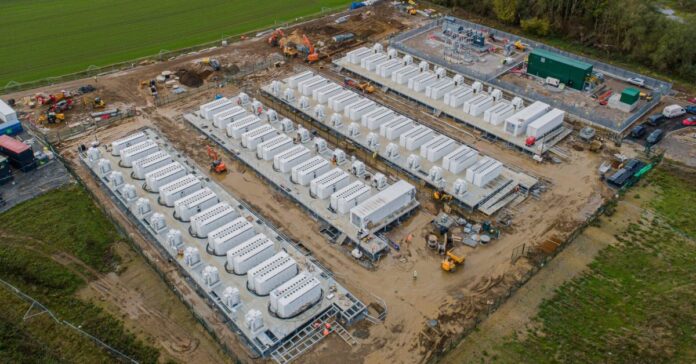Trump’s new tariffs on China have just kneecapped Tesla’s only growing business: energy storage, which uses battery cells from China.
Tesla released its delivery results for Q1 2025 yesterday, which were quite disastrous. At 336,000 electric vehicle deliveries, they were 40,000 units below the consensus and about 20,000 units below what even the most pessimistic analysts expected.
But there was one silver lining: Tesla reported having deployed 10 GWh of energy storage – a new record for a first quarter.
While Tesla’s electric vehicle business entered a downturn in 2024, which is now accelerating in 2025, Tesla’s energy business, which primarily consists of selling Megapacks and Powerwalls, has been consistently growing.

The bulk of this growth can be attributed to Tesla’s production ramp at its Lathrop Megafactory, where it produces the Megapack, and in the launch and production ramp of the Powerwall 3 with LFP battery cells.
Tesla now uses LFP battery cells from China to build these energy storage systems in California and Nevada.
According to the latest information, President Trump’s new tariffs announced yesterday are resulting in 54% tariffs on importing Chinese battery cells into the US.
This will significantly increase the prices of Tesla’s Powerwall and Megapack products, which should reduce the market.
The Biden administration had already announced an increase to 25% tariffs on Chinese battery cells meant for energy storage, coming in 2026.
Tesla was already bracing for the new tariff, but the Trump administration has dramatically accelerated the timeline and increased the tariffs. The administration has confirmed that the tariffs are stacking up on top of each other, which would mean 54% for goods coming from China.
The company is believed to almost exclusively use LFP battery cells from China’s CATL in its stationary energy storage products.
With the upcoming changes in 2026, Tesla was likely preparing for the change. Last year, there were rumors that Tesla was looking to establish a LFP battery plant in the US in partnership with CATL, but the plans have yet to materialize.
Tesla has also recently started production at a new Megafactory in Shanghai to produce the Megapack. The battery systems coming out of that plant are expected to be shipped to markets outside of the US and should enable Tesla to stay competitive outside the US.
Although, as we previously reported, Tesla is starting to face intense competition from its own battery suppliers for these products, CATL and BYD, which have both recently unveiled products to compete with the Megapack.
Tesla has also recently announced plans to build a second Megafactory in the US to build more Megapacks, but it’s not clear how those plans are going to be affected by the new tariffs.
Electrek’s Take
Since last year, stationary energy storage has been Tesla’s only growing business unit, and I was already worried about it because of increased competition. BYD and CATL already have a hold on LFP cells going into the Megapack, and now they are making their own Megapack products with their own cells.
On the consumer side, we recently reported that Tesla’s brand issues also extend to the Powerwall.
Now, Tesla has to worry about tariffs significantly increasing the price of its Megapacks and Powerwalls in its biggest market: the US.
There’s a chance that Tesla has accumulated some inventory in anticipation of the tariffs, but unless they are removed, which is not impossible considering how volatile the administration has been about implementing its promised tariffs, it will result in massive Megapack and Powerwall price increases.


